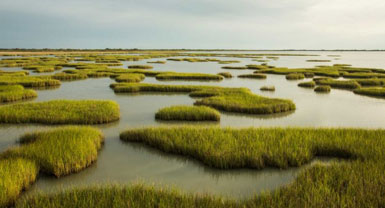It’s about time. Four years after BP’s tragic oil spill in the Gulf of Mexico, a federal judge ruled the company behaved with "utter disregard" causing the spill through "willful misconduct and gross negligence," making decisions based on profits.
The word "gross" is the key here, allowing the judge to charge BP with the maximum civic penalty under The Clean Water Act. While the typical fine is $1100 per barrel spilled, BP could be charged quadruple that, resulting in a $18 billion fine for 4.9 million barrels spilled.
The judge hasn’t yet ruled on how many barrels were spilled. The US government says it was 4.9 million and BP says it was half that.
While the final penalty could be announced in early 2015, it could be years before money actually changes hands, because BP will appeal. 80% of the fines go to restoring the Gulf of Mexico under the RESTORE the Gulf Coast States Act and 20% goes into the Oil Spill Liability Trust Fund.
This penalty is in addition to $4.5 billion in criminal fines – the biggest in US history – and $27 billion in cleanup costs and compensatory payments to individuals and businesses (which it can deduct from taxes!). There could be $10 billion more in fines under the federal Oil Pollution Act of 1990, for environmental damage. Last year, BP made $24 billion in profits.
While US District Judge Barbier ruled BP was reckless, assigning it 67% of the blame, Transocean and Halliburton were merely negligent, with 30% and 3% of the responsibility respectively. Halliburton settled for $1.1 billion.
"Eleven men lost their lives. Bottlenose dolphins, endangered sea
turtles and countless species of fish and wildlife perished. Studies have
estimated that the oil killed an astonishing 800,000 birds and caused billions
of dollars of economic damage," says Collin O’Mara, President of the National Wildlife Federation, which released the report, Four
Years Into the Gulf Oil Disaster: Still Waiting for Restoration.
Restoration Can Finally Begin
Believe it or not, the first large tranche of restoration funds has just been announced – $627 million has been approved for 44 restoration projects, following a measly $71 million in a previous round.
It took until this summer for the federal government to finalize rules on how the money will be distributed, even though BP set aside $1 billion in 2011 to help communities recover.
Representatives from Gulf states sit on the Deepwater Horizon Natural Resource Damage Assessment Trustees, which governs the distribution of funds. $340.4 million will go to Louisiana, $105 million to Florida, $93.8 million to Alabama, $69 million to Mississippi, and $18.4 million to Texas.
Projects range from restoring barrier islands and wetlands to reducing erosion and creating oyster reefs. But many are simply restoring recreational and tourism areas, like the $58 million Alabama is spending to build a conference center and replace a beachfront hotel.
Over 17,000 acres of pristine Texas coast is being protected – one of the largest remaining tracts of unspoiled coastal prairie. It will also protect thousands of acres of wetlands and salt marshes, providing crucial wildlife habitat and a buffer from storm surges and sea level rise.
Powderhorn Ranch, Texas:

Meanwhile, the area right around the spill is starting to come back to life, according to scientists from University of Georgia, Florida State University, and University of North Carolina. Some crabs, shrimp and other small invertebrates are recolonizing, but the oil still sits on the seafloor, slowly being buried under layers of sediment.
If people are around 1,000 years from now, they will still be able find remains of the 2010 spill, "back when people depended on fossil fuels,"
Andreas Teske, marine sciences professor at the University of North Carolina, told ThinkProgress. "The oil spill has become part of the the geological record. Since one can’t take a gigantic vacuum cleaner and clean up this stuff, getting buried is the best alternative."
Read our article, One Year Later: Gulf Coast Restoration Plan Released.
BP Wants to Drill Deeper
Of course, BP, Chevron and Shell want to take even more risks on drilling in the Gulf. While the BP Horizon disaster occurred a mile down where pressures reach 13000 pounds per square inch, technologies under development would allow them to drill over seven miles deep, where temperatures can be 400 degrees F. and pressure is 20,000 pounds per square inch.
In June, BP received the first-ever commercial permit to fly drones over land. Awarded by the Federal Aviation Administration, BP plans to conduct aerial surveillance over Alaska’s Prudhoe Bay – the largest oil field in North America. The area is known for routine oil spills, air pollution and environmental damage.
The FAA has also approved drones to survey Arctic waters in preparation for oil exploration.
Read our article, Will Big Oil Pay to Restore Louisiana’s Coast?
